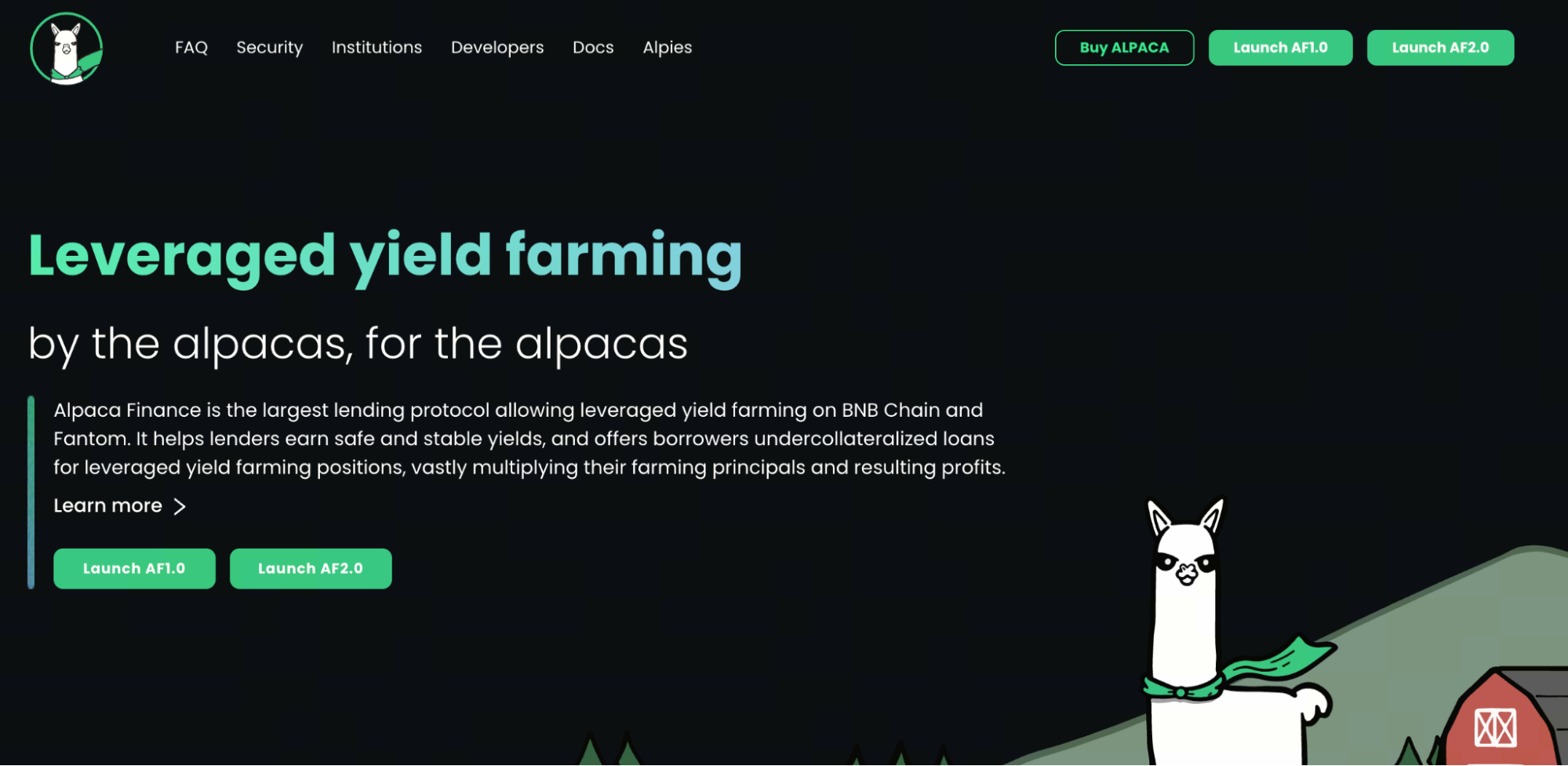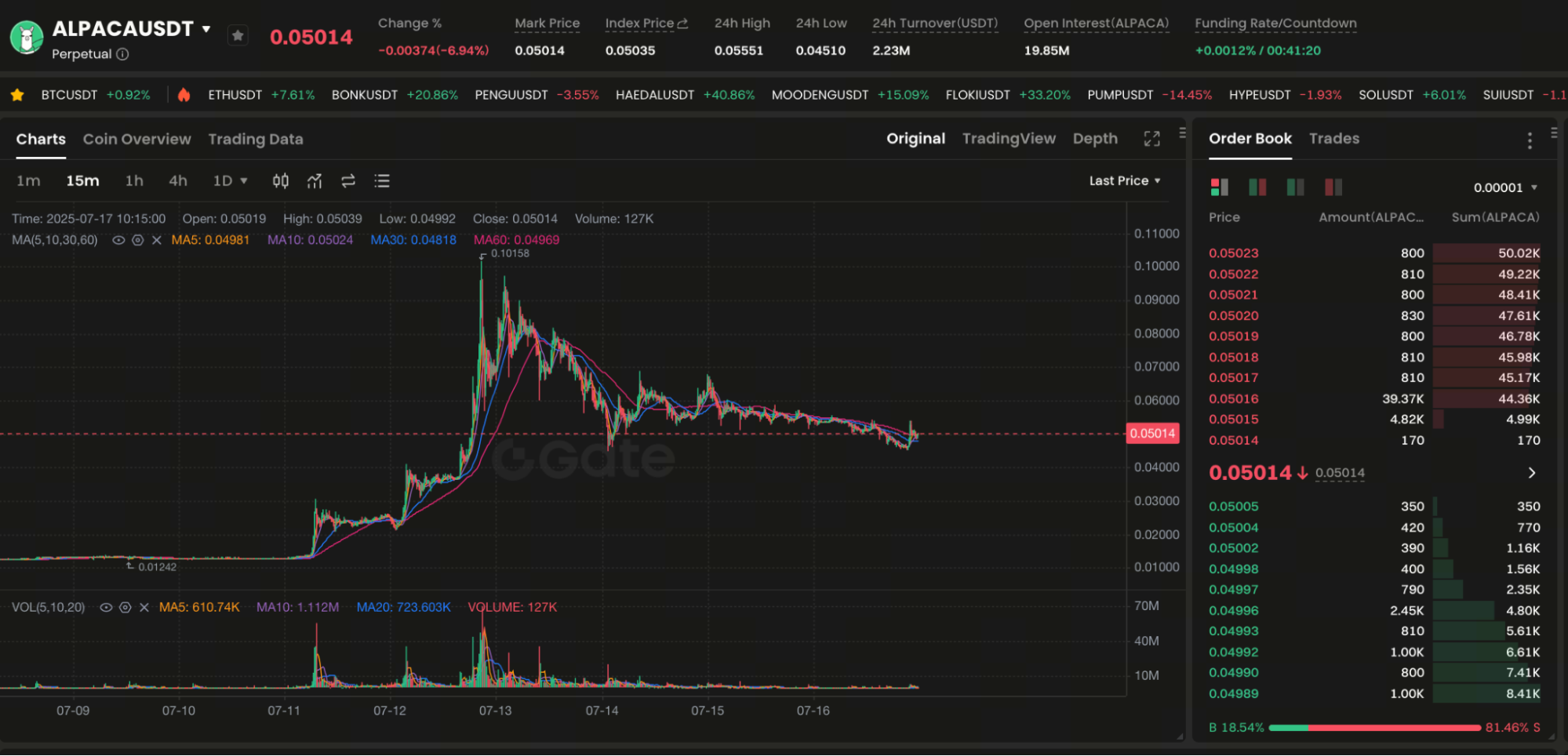Articles
AllAltcoinsBitcoinBlockchainDeFiEthereumMetaverseNFTsTradingTutorialFuturesTrading BotsBRC-20GameFiDAOMacro TrendsWalletsInscriptionTechnologyMemeAISocialFiDePinStableCoinLiquid StakingFinanceRWAModular BlockchainsZero-Knowledge ProofRestakingCrypto ToolsAirdropGate ProductsSecurityProject AnalysisCryptoPulseResearchTON EcosystemLayer 2SolanaPaymentsMiningHot TopicsP2PSui EcosystemChain AbstractionOptionQuick ReadsVideoDaily ReportMarket ForecastTrading BotsVIP Industry Report
More
ALPACA Futures Market Volatility Explained: Uncovering the Logic Behind April and July Surges
ALPACA Futures, as an innovative DeFi derivative, offers high leverage and deep liquidity, with a real-time price of approximately $0.05020. The intraday Fluctuation is significant, and this article will guide you to easily get started and seize trading opportunities.
1. What are ALPACA Futures?

Image:https://www.alpacafinance.org/
ALPACA Futures (Perpetual Contracts) are a type of derivative based on the ALPACA token, allowing traders to participate in both long and short trades without holding the underlying asset. The contracts have no expiration date and maintain price anchoring with the spot market through a funding rate mechanism.
2. Trading Mechanism and Leverage Characteristics
- Perpetual contract design: By using a funding rate settled periodically, the contract price converges with the spot price.
- Long and short positions: go long with the expectation of an increase, go short with the expectation of a decrease, flexibly capture market trends;
- High leverage support: Mainstream platforms can offer up to 50x leverage, and beginners should use leverage cautiously to amplify both returns and risks.
3. Latest Price and Market Performance

Image:https://www.gate.com/futures/USDT/ALPACA_USDT
As of July 17, 2025, the mark price of ALPACA Futures is approximately $0.05020, with a daily high reaching $0.05626 and a low dipping to $0.04536, and the 24-hour trading volume is about 460,000 ALPACA (equivalent to $23,600).
The spot price on the same day is $0.049806, down 8.80% in the past 24 hours.
4. This year’s two violent pump events
- April Super Surge: From April 17 to April 30, 2025, the ALPACA contract rapidly rebounded from the lowest point of the day, with a total increase of about 4,367%, attracting a large amount of short-term capital to enter the market, and trading volume surged.
- July surges again: From July 7 to July 14, 2025, the contract price achieved a short-term increase of approximately 350%, and then quickly fell by 33% within 24 hours, leading to discussions in the market about possible manipulation factors behind it.
5. Trading Risks and Risk Control Strategies
- Price Fluctuation: The above two pumps were accompanied by extreme fluctuations, and beginners should not blindly chase high prices.
- Liquidation Risk: The risk of positions increases under high leverage. It is recommended to set stop-loss levels and control reasonable positions within 1-3% of total funds.
- Funding rate fluctuation: Both long and short positions need to pay or receive the funding rate, and long-term positions need to pay attention to the funding rate cost.
6. Beginner Tips and Operation Process
- Account Opening and Deposit: Complete KYC on Gate and deposit USDT;
- Choose leverage: Select appropriate leverage based on risk tolerance, generally recommended not to exceed 10x;
- Order strategy: You can use market orders for quick entry and exit, or set limit orders to capture key support and resistance.
- Risk control settings: Be sure to preset take profit and stop loss when placing orders, and use the “isolated” mode to reduce the probability of liquidation.
- Real-time monitoring: Pay attention to market depth and the movements of large holders, and combine technical indicators (such as RSI, MA) to assess trends.
Author: Max
* The information is not intended to be and does not constitute financial advice or any other recommendation of any sort offered or endorsed by Gate.
* This article may not be reproduced, transmitted or copied without referencing Gate. Contravention is an infringement of Copyright Act and may be subject to legal action.
Start Now
Sign up and get a
$100
Voucher!




